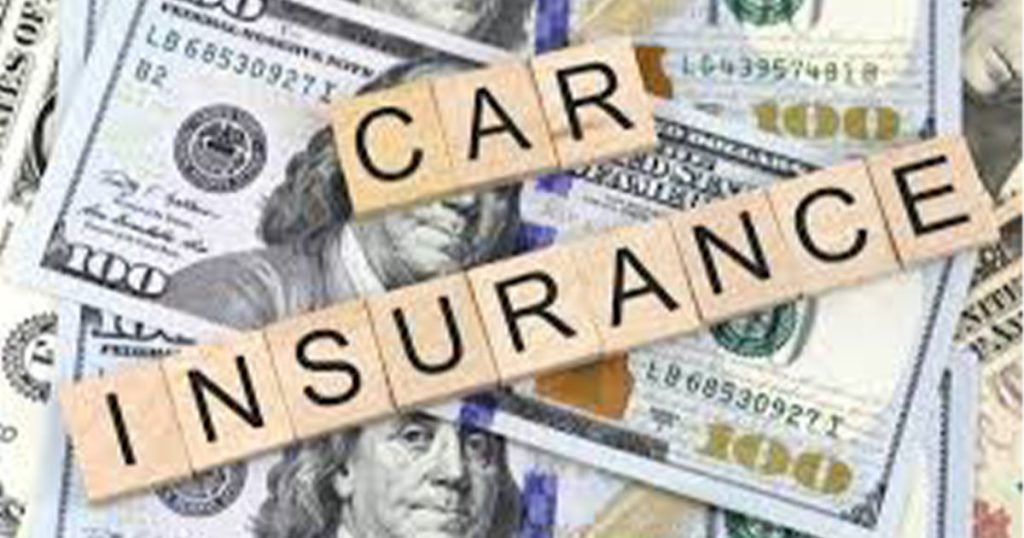AAA Car Insurance vs Geico The car insurance market is huge and competitive, with many providers fighting for consumers’ attention. Every company boasts its strengths, guaranteeing superior coverage, the lowest rates and an unrivalled customer service experience.
AAA and Geico are undoubtedly two of the most recognized names in the industry, and for good reason. AAA has a decades-long history with a membership-based model that offers an umbrella of insurance and roadside assistance benefits.
It has developed a reputation for personalized service through its regional motor clubs. Meanwhile, there’s Geico, which is owned by Berkshire Hathaway and has been at the forefront of an industry transformation by selling directly to consumers, using technology and advertising to provide competitive prices and an easy-to-navigate online experience.
With 2025 just around the corner, examining the AAA vs. Geico difference becomes a paramount concern for drivers wanting to maximize their insurance value. Things like pricing structures, coverage options, discounts, and customer service experiences can have massive effects on policyholder satisfaction. Understanding these factors can guide consumers in selecting which insurer best suits their financial goals and lifestyle needs.
Company Background

History and Reputation of AAA
For more than a century, the American Automobile Association (AAA) has been a fixture of roadside assistance and auto insurance. AAA, which stands for the American Automobile Association, was founded in 1902 as a group of motor clubs advocating for safer and better roads. Decades later, it became a nationwide organization that provided all sorts of services, from insurance and travel planning to exclusive member discounts.
AAA is a federation of regional motor clubs, each offering member services specific to local needs. This decentralized global structure allows you to deliver personalized customer service, a trait that sets AAA apart from larger, corporate-run insurers. It’s perhaps best known for its highly rated roadside assistance program, which covers towing, battery replacements, fuel delivery and more.
AAA, with its longstanding reputation of reliability, has earned the respect of millions of drivers. Although mainly known for its member benefits, the insurance business is also competitive and may appeal to people looking for coverage with added perks.
History and Reputation of Geico
Established in 1936, Geico (the Government Employees Insurance Company) initially set out to provide low-cost car insurance to government workers and military members. The company grew its reach to the general public over the decades, and it would become one of the largest and most recognizable car insurance carriers in the United States.
An essential part of Geico’s success has been its direct-to-consumer business model, which allows it to skip conventional agents and have customers get quotes, manage policies and file claims entirely online or on the phone. This streamlined approach has helped Geico develop a reputation for providing some of the most competitive rates in the industry.
Geico’s brand retention is also heightened by its advertisement campaigns, which feature easily recognized characters, like the Geico Gecko and the Caveman. With the financial backing of Berkshire Hathaway, Geico is a trusted name for accessibility, digital experience and affordable auto insurance rates for all kinds of drivers.
Coverage Options

Standard Coverage Comparison
Geico and AAA both offer standard auto insurance coverage liability, collision, and comprehensive insurance to cover you in the event of an accident, theft, or damage. But their frameworks for policy are starkly different.
AAA also operates through regional motor clubs, so coverage options and prices may differ based on where you live. Other clubs may have minor variations of services, like extended nationwide coverage, where they will tow your vehicle anywhere in the country or even include local member benefits and member discounts at selected sites.
However, Geico adopts a uniform strategy that is less common for all states across the country, offering most other states comparable policy options and prices. While both insurers offer essential coverage, AAA’s regionally tailored customization connects with consumers interested in individualized service, while Geico’s generic policies attract drivers in search of simplicity and affordability.
Additional Coverage Options
AAA and Geico both offer add-ons that could go beyond their basic coverage. AAA also offers some unique add-ons, such as trip interruption protection, which would pay for expenses like lodging and meals if a breakdown occurred far from home.
Only a few AAA clubs include identity theft monitoring for additional financial protection. Geico does offer mechanical breakdown insurance, though, so if you are looking for cheap car insurance, consider that an alternative to an extended car warranty that covers repairs on new cars.
It also provides emergency road service, although the coverage may not be as broad as AAA’s with its well-known roadside assistance program.
Customization Flexibility
AAA and Geico differ in how much coverage you can customize in your policy. AAA makes adjustments to policies based on specific areas through a network of motor clubs and local offices. Such a structure enables members to enjoy some exclusive regional benefits, including expanded roadside assistance, tailored coverage options, or bundled discounts, depending on the club.
With a model that cuts out intermediaries, Geico emphasizes digital convenience, allowing customers to change their policies quickly online or through its mobile app. Drivers can modify coverage limits, add endorsements, or inquire about discount opportunities in a matter of clicks.
Geico’s flexible options are standardized, while AAA’s regional approach offers more tailored benefits to help policyholders maximize their coverage.
Rate Factors
How Age Affects Premiums
For both AAA and Geico, age significantly affects car insurance rates. Younger drivers, particularly teens, tend to have higher rates because they have less experience behind the wheel and a higher risk profile.
Geico generally has more competitive rates for this subset, frequently offering discounts for good students and driver education classes. On the flip side, AAAs are usually more attractive for senior drivers, factoring in loyalty discounts and perks geared toward older, more seasoned drivers.
The Impact of Driving History
Both AAA and Geico offer reduced premiums for drivers with clean records. But Geico is usually less strict about providing drivers with cheaper rates if they have minor infractions themselves, such as speeding tickets or at-fault accidents.
AAA, which offers competitive rates for safe drivers, might not be as forgiving for people with blemishes on their records.
Location-Based Pricing Differences
AAA’s pricing is highly influenced by the regional motor club you belong to, so premiums can vary significantly by location. Details vary by club, covering things like benefits levels and pricing based on regional risk factors.
In contrast, Geico sticks to mostly consistent pricing across the country, although rates can vary by state regulations and factors such as traffic congestion and the climate.
Credit Score Considerations
AAA and Geico consider credit scores for insurance premium determination. The higher your credit score, the lower your rates, essentially because insurers see you as financially responsible.
Geico does, though, give slightly more significant discounts for excellent credit, allowing policyholders with good credit histories to save more if they go with Geico instead of AAA.
Discounts and Savings
AAA Membership Perks
More than Car Insurance Members save on travel services and hotel bookings, rental cars, dining, shopping and entertainment, among other things. This is in addition to AAA being an impressive car insurance choice.
Geico’s Discount Structure
Geico offers several discounts for policyholders to save on premiums. Notable discounts are those for military personnel, federal employees, and safe drivers people with a clean driving record.
Geico also provides discounts for bundling policies, insuring multiple cars, and even completing defensive driving courses. These discounts help make Geico a good option for most drivers.
Exclusive Savings Opportunities
For these discounts, known as bundling options, AAA provides several savings options to policyholders willing to combine multiple insurance policies (like home and auto) under one umbrella. Geico, on the other hand, offers discounts for taking a defensive driving course and for insuring multiple cars. Both insurers are appealing options for drivers seeking to cut total costs thanks to these discounts.
Claims Process and Customer Experience
Ease of Filing a Claim
Geico has an entirely online claims process that is easily accessible and straightforward, with policyholders able to submit and track existing claims through its website or mobile app. This digital-first approach increases convenience and efficiency.
AAA, on the other hand, to this day, processes claims through regional offices, which may take additional steps and differ by location, maybe rendering things less immediate than Geico’s online system.
Speed of Claims Resolution
Geico tends to resolve claims faster due to a quick, digital claims process. The process should be quicker for policyholders, and services are often carried out entirely online, leading to rapid assessment and payments.
On the other hand, some of my friends have noted that AAA processing has been inconsistent. AAA might require in-person assistance at local offices to resolve issues, which could significantly increase wait time.
Customer Satisfaction Ratings
AAA often scores better with customer satisfaction, as it provides more customized, in-person support with a more hands-on approach to service. On the opposite end of the digital accessibility spectrum, Geico boasts speedy response times and convenient online tools to manage policies and file claims. This positions Geico as a go-to choice for tech-focused consumers wanting agility.
Roadside Assistance and Additional Benefits
AAA’s Legendary Roadside Assistance
AAA is a household name thanks to its legendary roadside assistance program, which provides a variety of services for drivers in times of emergency. Towing, battery jumps, flat tire assistance, fuel delivery, and locksmith support are among these services.
One of the most valuable benefits of AAA is the 24/7 availability of roadside assistance, which makes it a top choice for many drivers who want to follow their cars.
Geico’s Emergency Services Comparison
Geico also has an emergency roadside service that pays for things like towing, fuel delivery, tire changes, and battery jumps. However, its coverage limits may not be as expansive as AAA’s, which comes with extra benefits like locksmith assistance and trip interruption benefits.
Although Geico’s roadside assistance is solid, AAA is usually considered to be the more comprehensive option for drivers who want more help during emergencies.
Travel and Rental Car Perks
AAA members also benefit from various travel-related perks, such as discounts on hotels, car rentals, and vacation packages. AAA also provides one-on-one trip planning services, where members can get advice on suggested routes, lodging, and travel itineraries.
Geico, on the other hand, typically covers rental car reimbursement under its policies so that you will have coverage for a rental car. In contrast, your vehicle is being repaired after a covered incident.
Policyholder Perks and Rewards

AAA’s Travel and Retail Discounts
AAA members can access discounts on hotels, rental cars, and entertainment.
Geico’s Partnership Programs
Geico partners with various organizations to offer exclusive policyholder benefits.
Mobile App and Digital Experience
AAA’s Technology and App Features
The AAA mobile app allows users to request roadside assistance, track services and access membership perks.
However, its insurance-related features aren’t as sophisticated as those of Geico’s app, which has comprehensive options for managing policies, tracking claims and paying premiums. AAA shines when it comes to roadside services, but Geico’s app offers a more complete digital experience for managing insurance.
Geico’s Digital Tools and Innovations
Geico’s app allows access to policy management services. Users can view and make changes to coverage, pay premiums, and track claims in real-time. The app also offers 24/7 customer support for claims or inquiries. Geico offers a user-friendly interface and a full suite of tools that get you dash boarding quickly and seamlessly.
Financial Strength and Reliability
AAA’s Financial Stability Rating
AAA earns some of the highest financial ratings in the business from significant rating organizations, indicating its command to pay claims and back the policyholders. However, because AAA is based on a system of regional motor clubs, the financial health and policy offerings can vary depending on the specific club. While some regional clubs are financially more potent than others, consumers will want to check their local AAA branch’s ratings and reputation before buying a policy.
Geico’s Corporate Backing
Geico has access to very strong financial resources due to its membership in Berkshire, an incredibly stable and well-capitalized company. This corporate backing ensures that Geico can process claims effectively and will be financially stable in the long run. Geico gives its policyholders a sense of reassurance in its solidness (especially during an economic downturn or heavy-hit claims event) because of its steady ratings from agencies such as AM Best and Standard & Poor’s.
AAA vs Geico for Different Driver Profiles
Best for Young Drivers
For younger drivers, Geico is usually the best option ; it has among the most competitive rates and offers a slew of discounts. The insurer has a good student discount for drivers with a high GPA, as well as for completing defensive driving courses. Geico’s easy-to-use digital tools also make it a cinch to manage a policy for tech-savvy young drivers, adding to its allure.
Best for Senior Drivers
AAA has those benefits on average for senior drivers if you’re comparing basic coverage. These include the benefits AAA offers for its senior-oriented, defensive-driving-focused program and its loyalty-based discounts. AAA’s personalized customer service and roadside assistance give older drivers peace of mind that they may find more comfortable with a hand-holding experience than a digital-first one.
Best for High-Risk Drivers
Geico is generally cheaper for drivers who have experienced accidents, speeding tickets, or other violations. While both insurers consider driving history a factor in setting rates, Geico tends to be more forgiving of minor infractions and offers accident forgiveness programs in certain states, making it a better option for an even broader range of high-risk drivers when it comes to rate management.
Customer Reviews and Satisfaction Scores
AAA’s Policyholder Feedback
Forums replete with AAA members continually praise the business’s customized attention and all-encompassing roadside-help network. Because it operates on a club model, though, policyholders’ experiences can differ from region to region, creating occasional disparities in the quality of service it offers and differences in prices.
Geico’s Customer Sentiment
Geico earns a strong review for affordability, the ease of managing a policy online and responsive customer service. That said, some customers have mixed experiences if they need to make a claim, especially regarding how long it takes and how much they get paid.
Pricing Transparency
Hidden Fees to Watch For
AAA charges its own membership fees, which can affect overall costs for insurance seekers. In contrast, Geico has a highly straightforward pricing structure with fewer optional costs outside of regular premiums.
Billing Practices and Renewals
Each insurer gave the customer the option to pay monthly, semi annually, or annually. A lot of this confusion might stem from the fact that AAA members may need to renew their car insurance policy separately from their club membership.
Bundling and Multi-Policy Discounts
Home and Auto Bundling with AAA
AAA offers the most significant cost savings for customers who combine home and auto insurance. AAA has regional motor clubs, so the exact amount of the discount may vary based on your location. But bundling usually equals significant savings, and that’s why something like AAA is so practical for people who are looking for multi-policy discounts or other perks from a membership.
Geico’s Multi-Policy Discounts
Unlike AAA, Geico doesn’t directly underwrite homeowners insurance; it works with third-party insurers to offer bundling options. Customers can keep saving by bundling policies, but maybe not as much as they would with AAA. Because Geico works with third-party vendors to offer home insurance, customer service and claims processing might not be as seamless as you’ll find with its auto policy.
User Experience and Accessibility
AAA’s In-Person and Phone Support
AAA is unmatched for its customer service network thanks to its many regional offices where you can get help in person. Phone support is also available for inquiries about insurance, claims, and making changes to an existing policy. If you are someone who would much prefer this in real life and not everything online, registration with AAA is an excellent option.
Geico’s Fully Online Approach
Geico has a digital-first model, with a simplified online platform and mobile application for customers to manage policies, file claims, and access customer service. The Insure Tech model helps insurers provide online solutions that offer convenience to customers who prefer dealing with their insurance at a time of their choice.
State-by-State Pricing Differences
Regional Variations in Premiums
AAA’s price structure also depends heavily on the regional motor club, so prices can be much different based on location. Although Geico ratings still must meet risks and state regulations, its pricing process is more uniform across the US.
Which States Favor AAA vs Geico
AAA is more competitive in states with a strong club system, like California and Florida, where the benefits of membership are more than just insurance. However, in states with lower insurance costs and a more competitive auto insurance market, Geico reigns in a top position, offering premiums that cost less in many regions.
Military and Government Discounts
Geico’s Military and Federal Employee Perks
Geico offers among the best discounts for military and federal employees, making it our best pick for service members and government workers. These discounts can add up to some substantial savings, especially when stacked with Geico’s already attractive rates.
AAA’s Veteran-Specific Benefits
AAA veterans discount (note: offers vary by club; is not in all locations). Some of their features have exclusive veteran benefits, while other places may have limited features.
Switching Between Providers

How Easy It Is to Switch
With online tools that let you quickly compare policies and generate quotes instantly, Geico makes switching insurance providers painless. AAA, conversely, generally has customers call a local agent so that it could involve some more steps.
Cancellation Policies and Potential Fees
One downside for anyone switching providers is that AAA can charge membership cancellation fees. Geico has a more transparent cancellation process with fewer potential fees, which makes it a bit more flexible.
Final Verdict: Which One Is Right for You?
Summary of Key Findings
AAA serves a different kind of driver than Geico. AAA is best for people who want personalized service, comprehensive roadside assistance and membership benefits. Geico: Best for Digital Convenience, Competitive Pricing
Who Should Choose AAA?
Drivers who want the best roadside assistance, travel perks, and in-person customer service will get the most out of their money with AAA’s offerings. AAA is also generally more attractive to those who travel often or need customized insurance through a local club.
Who Should Choose Geico?
Drivers who want a no-hassle online experience, little premiums and easy policy management should look into Geico. Geico’s specialized discounts could also be especially beneficial for active military members and government employees.
Conclusion
Which auto insurance company is better: AAA or Geico? Both carriers provide solid coverage options, but their strengths appeal to various kinds of policyholders.
If you prefer personalized service with regional customization and generous roadside assistance, AAA is a great option. A wealth of Membership Benefits Particularly Appealing to Frequent
Travellers: The ability to earn and redeem points, as well as membership benefits like travel discounts and assistance with trip planning. AAA typically extends better discounts to senior drivers and those interested in bundled policies.
Still, how it sets its insurance rates and coverage details can change from one regional motor club to another.
Geico, meanwhile, makes sense for tech-savvy drivers seeking a seamless digital experience combined with competitive pricing. With its strong mobile app, online claims process and loads of different discounts think military, federal employee, and multi-vehicle Geico is well-suited for the consumer whose focus is on affordability and convenience. It does have a high-quality roadside assistance program, though it can’t compete with the wide range of AAA services.
Because insurance premiums are based on several factors (age, location, driving history, credit score), the best way to find the right provider for you is to compare customized quotes. Taking a close look at coverage options, discounts, and extra services will help you find the insurer that best fits your needs and budget.
<script type="application/ld+json">
{
"@context": "https://schema.org",
"@type": "BlogPosting",
"mainEntityOfPage": {
"@type": "WebPage",
"@id": "https://cardsinspired.com/best-aaa-car-insurance-vs-geico-the-truth-about/"
},
"headline": "Best AAA Car Insurance vs Geico: The Truth About Rates – 2025",
"image": [
"https://cardsinspired.com/wp-content/uploads/2025/03/AAA-Car-Insurance-vs-Geico-The-Truth-About-Rates-2025-2.jpg",
"https://cardsinspired.com/wp-content/uploads/2025/03/AAA-Car-Insurance-vs-Geico-The-Truth-About-Rates-2025-1-1024x538.jpeg",
"https://cardsinspired.com/wp-content/uploads/2025/03/AAA-Car-Insurance-vs-Geico-The-Truth-About-Rates-2025-1-1024x538.jpg",
"https://cardsinspired.com/wp-content/uploads/2025/03/AAA-Car-Insurance-vs-Geico-The-Truth-About-Rates-2025-4-1024x538.jpg",
"https://cardsinspired.com/wp-content/uploads/2025/03/AAA-Car-Insurance-vs-Geico-The-Truth-About-Rates-2025-3.jpg"
],
"author": {
"@type": "Person",
"name": "cardsinspired.com",
"url": "https://cardsinspired.com/"
},
"publisher": {
"@type": "Organization",
"name": "cardsinspired.com",
"logo": {
"@type": "ImageObject",
"url": ""
}
},
"datePublished": ""
}
</script>















